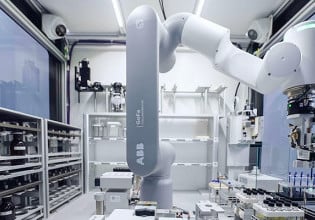Several IIoT Companies Band Together to Develop 5G and DDS-enabled Factory for Robotic Autonomy
ADLINK Technology Inc. enters into a collaboration with the Fair Friend Group and Institute for Information Industry to create the world’s first smart factory with private 5G-enabled swarm autonomy and DDS technology.
ADLINK Technology Inc. is a leading Edge hardware and software solutions provider in the embedded computing industry. The company is headquartered in Taiwan and operates worldwide, including the United Kingdom, United States, Singapore, Japan, Beijing, Korea, Shanghai, Shenzhen, and Germany.
Recently, ADLINK entered into a collaboration with the Institute for Information Industry (III) and Fair Friend Group (FFG). The trio aims to develop the world’s first private 5G factory and autonomous mobile robots (AMRs) with data distribution service (DDS) technology.
ADLINK DDS
DDS is a machine-to-machine (M2M) standard designed and summarized by the Object Management Group. This is an internet of things (IoT) protocol that can also be called middleware or a connectivity framework. The protocol was designed to help enable more reliable inter-operable, real-time, and scalable M2M communication.
The DDS uses multicasting techniques to support data transmission and quality of service (QoS) to various applications and small memory footprint devices. A data-centric public-subscribe (DCPS) layer is typically employed to enhance embedded systems’ performance and allow direct communication between publishers and subscribers.

ADLINK offers three Vortex DDS platforms: Insight, Cyclone, and OpenSplice. Image used courtesy of ADLINK
ADLINK provides its customers with an IoT solution in its ADLINK DDS, a data-sharing software framework based on the DDS standard. The solution was designed to help original equipment manufacturers (OEMs), system integrators, cloud service providers, and device platform vendors provide software solutions for aerospace and defense, healthcare, energy, robotics, automotive, and industrial automation.
Development and Deployment of Smart Factories
Combining DDS technology with 5G in ADLINK’s current project hopes to enable swarm autonomy within smart factories. This means that machines and robots will be able to communicate efficiently and in corroboration to improve factory processes and enhance production yield.

ADLINK’s ROScube. Image used courtesy of ADLINK
According to the news release, Taiwan manufacturing is experiencing high-mix, low-volume, and labor shortages, driving smart factories’ transformation. To combat these shortages, ADLINK designed the ROScube, a hardware and software integrated robotic controller adopting ROS 2.
ROS 2 uses ADLINK’s Cyclone DDS, providing data reliability and availability. Utilizing ROS 2 connects AMRs, robot arms, or machining centers. ADLINK plans to use this technology for automated optical inspection (AOI) solutions in smart factories and 5G Multi-access Edge Computing (MEC).
Per the release, ADLINK is the first company in Asia to provide DDS technology to help customers develop and deploy factories leveraging swarm automation.
5G and Artificial Intelligence
FFG has been utilizing 5G technology solutions and automated optical inspection for its smart factory processes. In the same news release, FFG commented on how replacing manual visual processes cut inspection time up to 25% while increasing yield by 16%.
Instead of manual processes, FFG production line personnel started using AR smart glasses to allow remote experts to provide real-time guidance. Due to this change, FFG expects to increase work efficiency by 15% and reduce maintenance costs by 20%.

Combining 3D imaging with 5G allows AMRs to map, avoid collisions, and follow or redirect pathways. Image used courtesy of ADLINK
III’s 5G stand-alone private network will be used in three areas of this project. First, III designed AI to interpret images with 5G returning high-resolution images to the Edge, issuing control commands to a robotic arm. Second, virtual images combined with real objects through mixed reality (MR) smart glasses provide step-by-step operational procedures. Lastly, III plans to use 5G to send 3D images to AMRs to map, detour, and re-plan, avoiding collisions with other AMRs on complex routes.
ADLINK, FFG, and III’s collaboration could promote similar companies in other countries to create smart factories, as well. Will smart factories continue trending upward?






